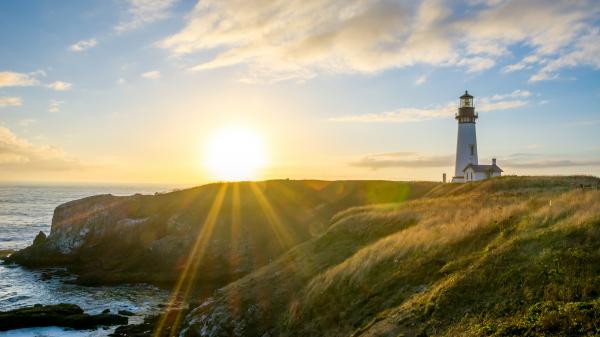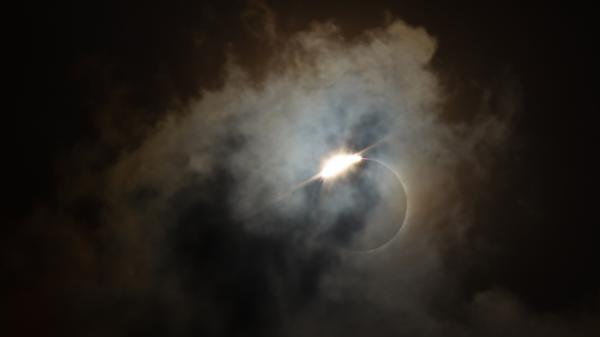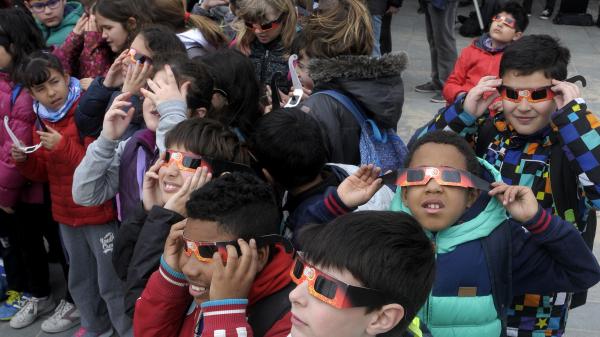The total solar eclipse of August 21, 2017 was visible from a narrow path spanning the US from the West Coast to the East Coast. Here are all the facts you need to know about this once-in-a-lifetime event.

Total solar eclipses are spectacular sights.
©bigstockphoto.com/Solarseven
Watch our recorded stream of the eclipse
1. 1st Total Solar Eclipse in 38 Years...
...for those in the contiguous United States (excluding Alaska and Hawaii). The last time anyone in mainland US saw a total eclipse of the Sun was on February 26, 1979. If you live in the US and missed this event, you'll have to wait until April 8, 2024 to see a total solar eclipse from a location in the contiguous United States.
Animation: Next Eclipse in Your City
2. Most North Americans Were Able To See Totality...
...if they were willing to drive, that is. The total eclipse was only visible along the Moon's central shadow, which at its widest was about 115 kilometers (71.5 miles), according to some sources. Its path spanned from the country's West Coast to the East Coast. The rest of North America, as well as Central America and northern parts of South America, experienced a partial solar eclipse. Prior to the eclipse, NASA estimated that a majority of the American population lives less than a 2-day drive away from the path of totality.
Interactive map: Was your city on the path of totality?
3. A Once-In-A-Lifetime Event
While total solar eclipses are not rare—they occur twice every 3 years on average and can be seen from some part of the Earth—a total eclipse of the Sun that can be seen from the American West Coast to the American East Coast occurs less frequently. Before the eclipse in August 2017, the last time a total solar eclipse was visible from coast to coast was almost 100 years earlier, on June 8, 1918!
What made this eclipse extra-special is that it was the first time since the total solar eclipse of January 11, 1880 that a total solar eclipse occurred exclusively over the continental United States—no other country saw totality, though many countries saw a partial eclipse of the Sun.
This is why this eclipse was also called the Great American Eclipse.

Yaquina Head Lighthouse, Newport, Oregon was one of the first places in mainland U.S. to see totality.
©iStockphoto.com/mattalberts
4. Parts of 14 American States Went Dark...
...for the 2 minutes of totality. The Yaquina Head Lighthouse in Newport, Oregon was the first location on continental US soil to see totality. The partial phase of the eclipse began there at 9:04 am local time. Lincoln City, Oregon was also one of the first locations in the country to experience totality.
Oregonians were also the first to see totality as the Moon's shadow moved east at an average speed of about 3600 km/h (2237 mph). After Oregon, the eclipse moved through Idaho, Wyoming, Nebraska, Kansas, Missouri, Illinois, Kentucky, Tennessee, North Carolina, Georgia, and South Carolina. Montana and Iowa are the only states where the path of totality passed through unpopulated areas. People in Charleston, South Carolina were some of the last people in the US to see totality.
Nashville, Tennessee is one of the few large cities in the United States that fell completely within the eclipse's path of totality. Interestingly, only some parts of Kansas City, Kansas and Kansas City, Missouri were able to see a total solar eclipse.
5. Totality Was Spectacular

The diamond ring and prominences visible at totality.
©iStockphoto.com/silkenphotography
If you were lucky enough to be in the path of totality and the skies were clear, you probably saw the some of the features that are typical for total solar eclipses. When an eclipse begins, at 1st contact, it appears as if the Moon is taking a bite out of the Sun. As the eclipse progresses, the sky gets darker, the temperature drops, and animals and birds become quieter.
At 2nd contact, which is when totality begins, Baily's Beads become visible. As the Moon completely covers the Sun's surface, the diamond ring can be seen. You might also see pink spots called prominences near the diamond. These spots are caused by gases on the Sun's surface.
Totality is the only time when one can see the corona, the Sun's atmosphere. At 3rd contact, Baily's Beads once again become visible and a second diamond ring may appear.
Science of total solar eclipses
6. Stars During the Daytime
As the sky turns dark during totality, planets and stars hidden in the sky by the Sun's bright light reappear, such as Mars, Mercury, Jupiter, and Venus.
Planets visible in your night sky
How far is a planet from Earth?

Never look directly at the Sun. Always wear protective eclipse glasses.
©iStockphoto.com/AlbertoRoura
7. You Need Eye Protection
Do not look directly at the Sun, before, during or after a solar eclipse without any protective eyewear.
Looking at the Sun with your naked eyes is highly dangerous and can even cause blindness. The safest way to see a solar eclipse is to wear protective eclipse glasses or use a pinhole projector you can easily make yourself.
8. Part of Saros Series 145
Solar eclipses occur in cycles. The Saros cycle, one of the most studied eclipse cycles, lasts for 18 years. Two solar eclipses separated by a Saros cycle have similar features—they occur at the same lunar node, with the Moon roughly at the same distance from the Earth. The eclipses also take place at about the same time of the year and around the same time of day. Eclipses that are separated by a Saros cycle are part of a Saros series.
The August 21, 2017 total solar eclipse belonged to Saros series 145. It was the 22nd eclipse in a series of 77 eclipses. The series began with a partial solar eclipse visible from the Northern Hemisphere on January 4, 1639 and will end with a partial solar eclipse visible from the Southern Hemisphere on April 17, 3009.
The next eclipse in the series—a total solar eclipse—will take place on September 2, 2035.
9. Two Weeks Before: Partial Lunar Eclipse
A solar eclipse always takes place about two weeks before or after a lunar eclipse.
Two weeks before the August 21, 2017 total solar eclipse, on August 7/ 8, 2017, a partial lunar eclipse was visible from parts of South and East Asia, Europe, Africa, and Australia.